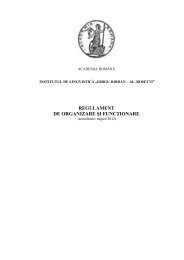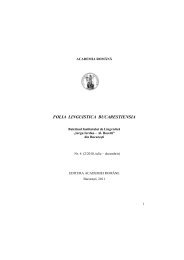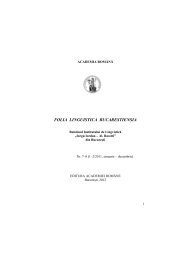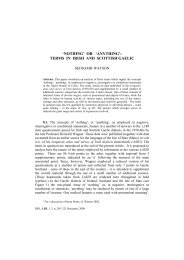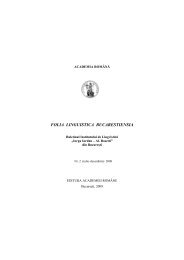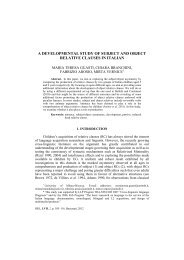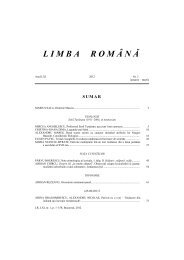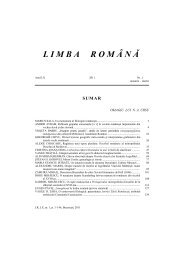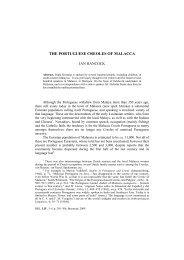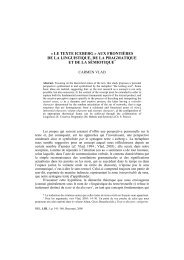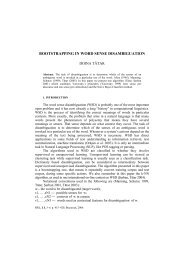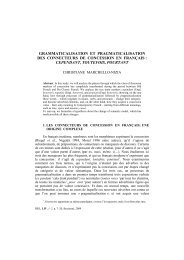PSEUDO-REDUPLICATION, REDUPLICATION AND REPETITION ...
PSEUDO-REDUPLICATION, REDUPLICATION AND REPETITION ...
PSEUDO-REDUPLICATION, REDUPLICATION AND REPETITION ...
You also want an ePaper? Increase the reach of your titles
YUMPU automatically turns print PDFs into web optimized ePapers that Google loves.
238Andrei A. Avram 14d. siksík ‘different’ (Tosco, Owens 1993: 231)e. suksuk ‘pearl’ (Miller 2003: 291)Two of these forms, dúrdur and kalkal, are included by Tosco and Owens(1993: 235) among “a great number of vocabulary items that link Turku with WSA[= Western Sudanic Arabic]”. According to Tosco and Owens 1993: 231), siksíkbelongs to the “host of vocabulary items that link Turku to general SudanicArabic”. Miller (2003: 291) notes that semsem and suksuk “are also known inSudanese Colloquial Arabic”. The following is an example of a pseudoreduplicatedword of African origin, attested in several West African languages(e.g. Twi, Yoruba, Lingala), with various genetic affiliations:(59) potopoto ‘mud’ (Tosco, Owens 1993: 185)According to Tosco and Owens (1993: 214), “reduplication occurs, though itis not strikingly common”. The extremely few examples available suggest thatreduplication applies to nominal and adverbial bases only.The noun fóǧur ‘early morning’ (Tosco, Owens 1993: 212) undergoesreduplication and yields an adverb with an intensifying meaning:(60) fóǧur-fóǧur ‘very early’ (Tosco, Owens 1993: 214)Reduplication of the adverb šúya / súya ‘a little’ (Tosco, Owens 1993: 212)expresses a distributive meaning:(61) šúya-šúya ‘little by little’ (Tosco, Owens 1993: 214)Note, finally, that even these reduplicated forms may actually originate in thelexifier language, since, as shown by Tosco and Owens (1993: 212), they “areequally found in SA [= Sudanic Arabic] dialects, suggesting that they were takenover as lexical wholes”.5. GULF PIDGIN ARABICGulf Pidgin Arabic is a cover term for pidginized varieties of Arabic spokenin various countries in the Arab Gulf and in Saudi Arabia (Smart 1990, Næss 2008,Bakir 2010).Only a few pseudo-reduplicated forms are attested in the available corpus:(62) a. sawasawa ‘together’ (Smart 1990: 96)b. sēm-sēm / seym-seym ‘same’ (Smart 1990: 96; Næss 2008: 53)



